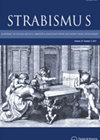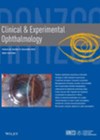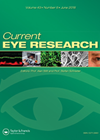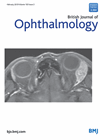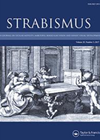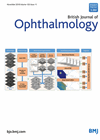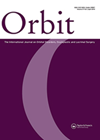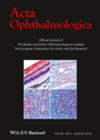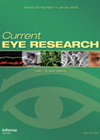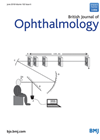
Journal Reviews
Strabismus and surgery impacts on reading
The authors compared eye movement performance during reading in strabismic children without amblyopia and in non-strabismic age-matched children in addition to evaluation of potential effect of strabismus surgery. They studied nine children aged 11-15 years; mean 12.9±0.6 years. Ten healthy...
Long-term outcomes of surgery for vertical head posture
The authors report long-term follow-up of a series of seven patients with nystagmus and chin up or chin down head posture that underwent vertical extraocular muscle (EOM) surgery. Mean age at surgery was 56 months (19-96 months). All had horizontal...
Conj reconstruction with amniotic membrane
This study reports the use of amniotic membrane in patients with restrictive strabismus or conjunctiva problems during or following complex eye muscle surgery. Ambio 5 was used for replacement of conjunctiva in this retrospective study of 32 cases aged one...
Effect of cataract surgery on inflammation control and vision in uveitis patients
This retrospective longitudinal study from Moorfields, London, UK compared uveitis recurrence rates and vision loss in 309 eyes of uveitis patients post cataract surgery to 300 control uveitis patients. Cataract is a common complication associated with uveitis and leads to...
Diclofenac versus Bromfenac after cataract surgery
Non-steroidal anti-inflammatory drugs (NSAIDs) are commonly used after cataract surgery to reduce inflammation and cystoid macular oedema (CMO). Diclofenac 0.1% is used three to five times daily for 28 days and Bromfenac 0.09% twice daily for 14 days postoperatively. The...
Temporal versus nasal clear corneal incisions
This is a prospective randomised study of 100 patients’ left eye having undergone phacoemulsification either by a 2.4mm nasal clear corneal incision (CCI) group or temporal CCI group. The corneal astigmatic changes were compared between groups by power vector analysis,...
Angle of deviation measurements in seated and supine positions
The objectives of this study were to compare ocular deviation between the seated and decubitus positions in the operating room and assess the outcomes at one day, one month and three months postoperatively. This prospective study included 30 cases; two...
Effect of phacoemulsification on facility of outflow
This is a prospective study to examine the change in electronic Schotz tonographic outflow (TOF) and IOP measurements after phacoemulsification. Intraocular pressure was measured using Goldman‘s applanation tonography (GAT). Data were collected at baseline, three, six and 12 months postoperatively....
Use of amniotic membrane in second stage Hughes tarsocunjunctival reconstruction
This is a retrospective, non-comparative interventional case series of 30 patients who underwent amniotic membrane transplantation to lower lid margin as part of Hughes lid reconstruction to prevent a hyperaemic, hypertrophic conjunctival margin with excessive discharge. Patients undergoing more than...
Under pressure: intraocular pressure and bariatric surgery
Obesity in the general patient population is increasing. The National Institute for Health and Care Excellence recommends bariatric surgery with body-mass index (BMI) of over 40, or between 35-40 and other significant disease that could be improved with weight loss....
Effect of refractive corneal surgery on IOP and glaucoma progression
Accuracy of intraocular pressure (IOP) measurement depends on the biomechanical properties of the cornea, including its thickness central corneal thickness (CCT) and keratometry (K). Fifty-six eyes of 56 patients with primary open angle glaucoma (POAG) who had a history of...
Surgical management of IIIcnp
This was a retrospective review of a cohort of patients with complete third nerve palsy (IIIcnp) managed by a surgical technique of full tendon transposition (FTT) of the lateral rectus (LR) to the medial rectus (MR) augmented with posterior fixation...

